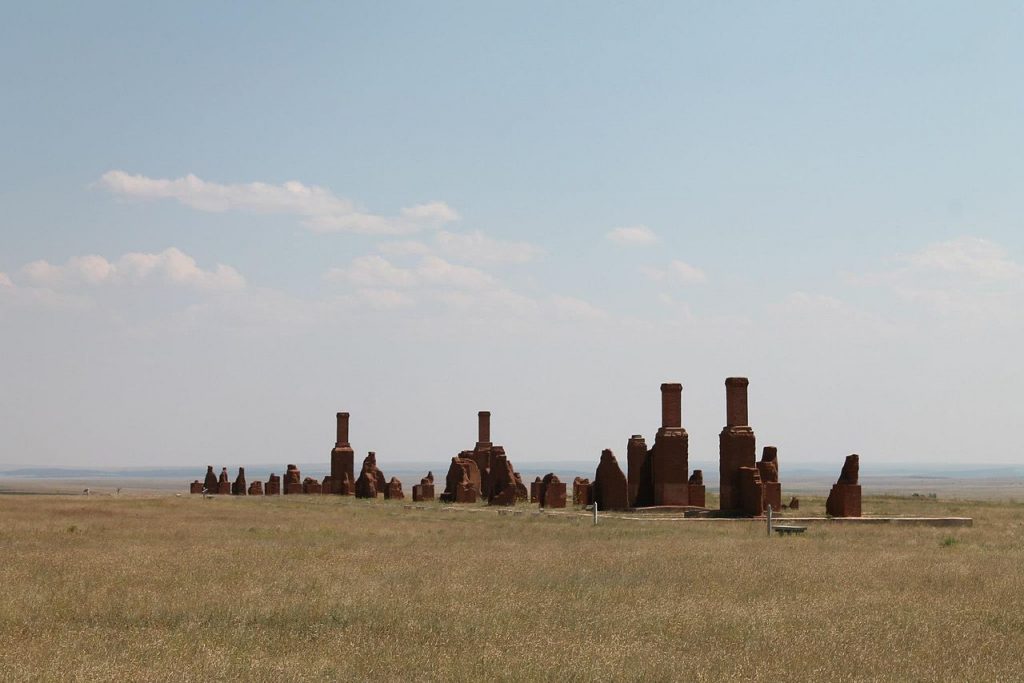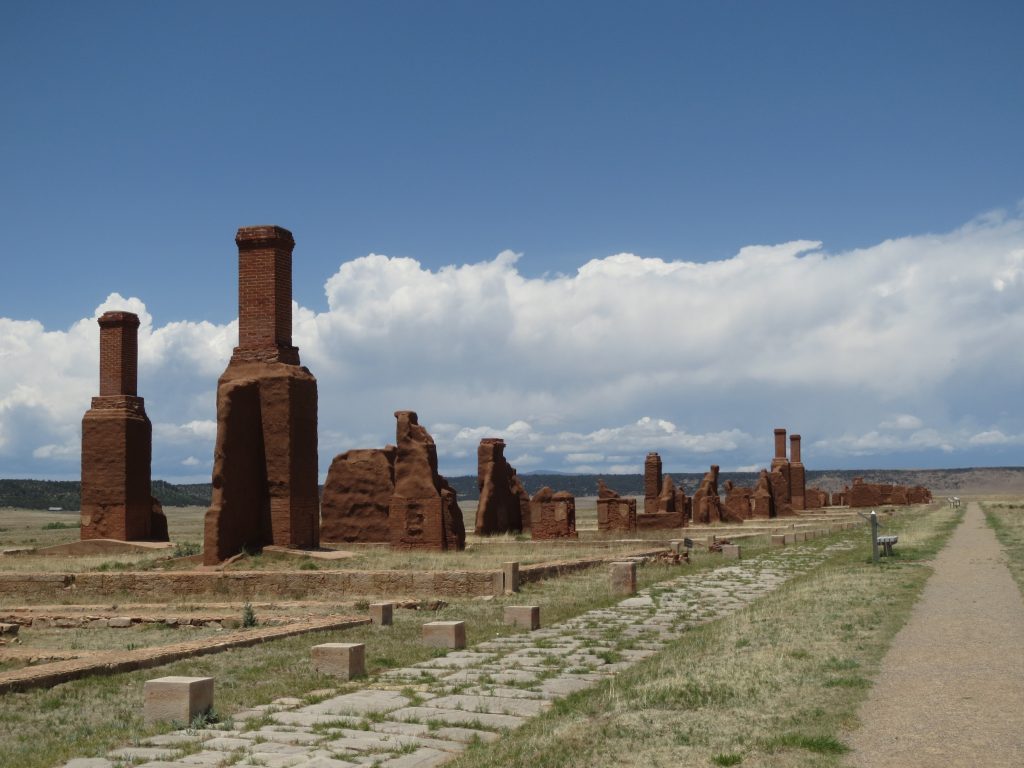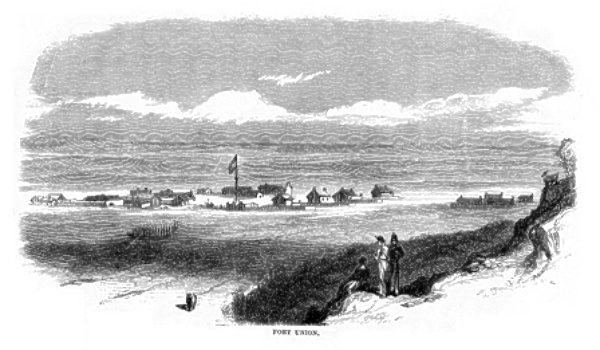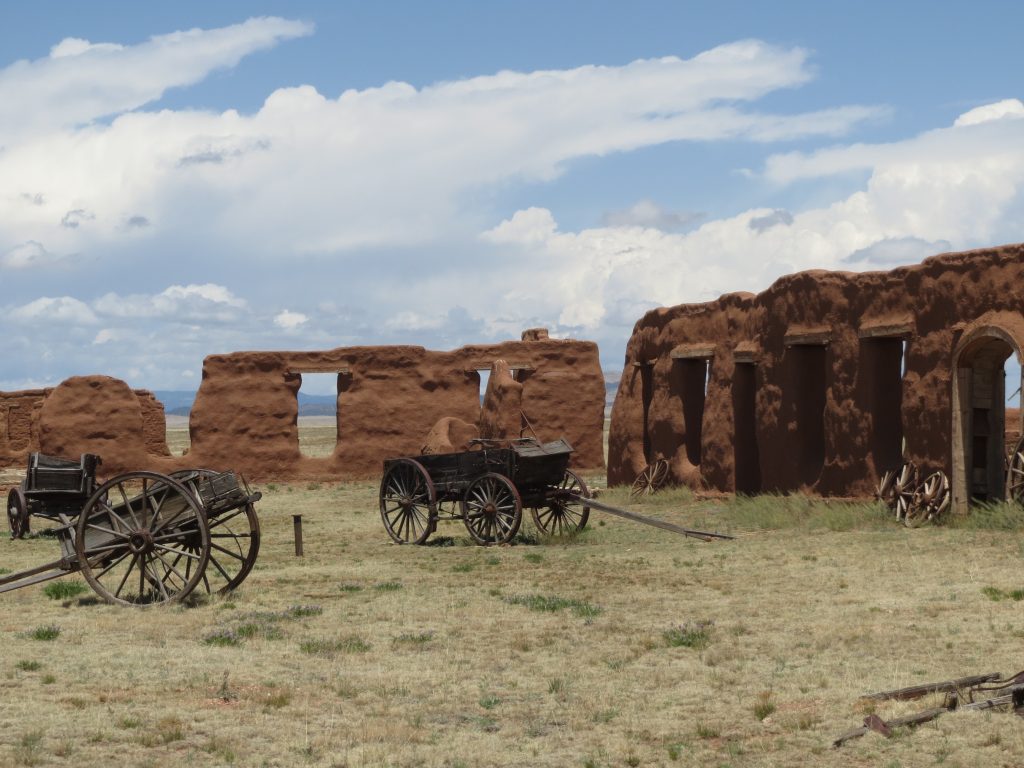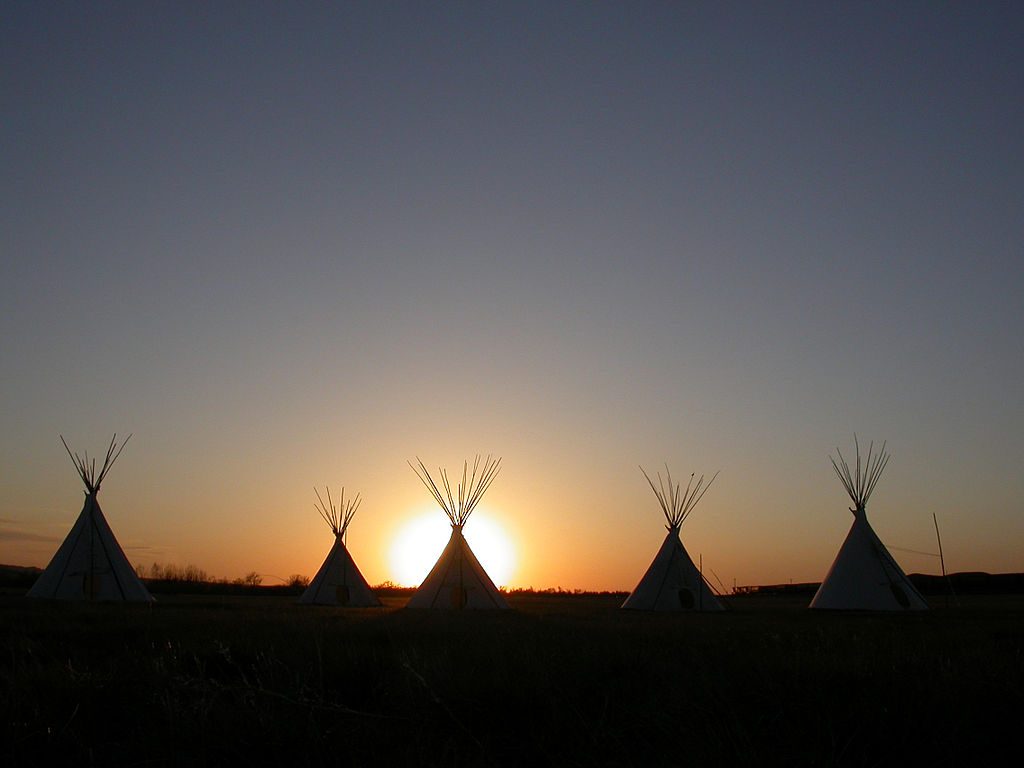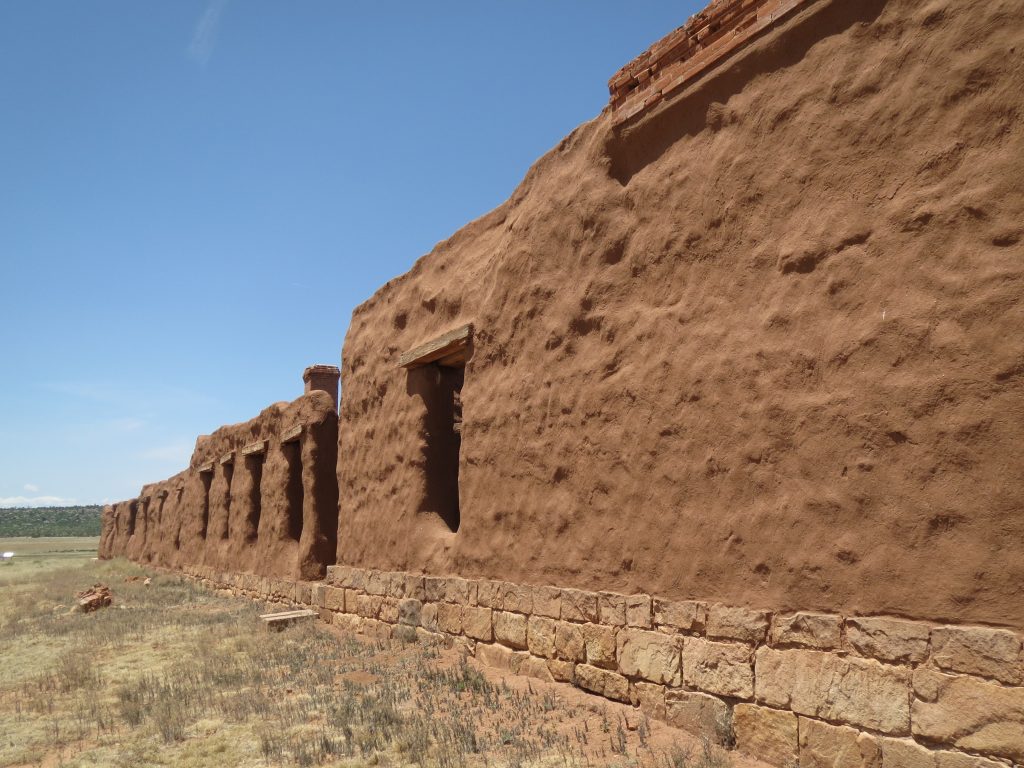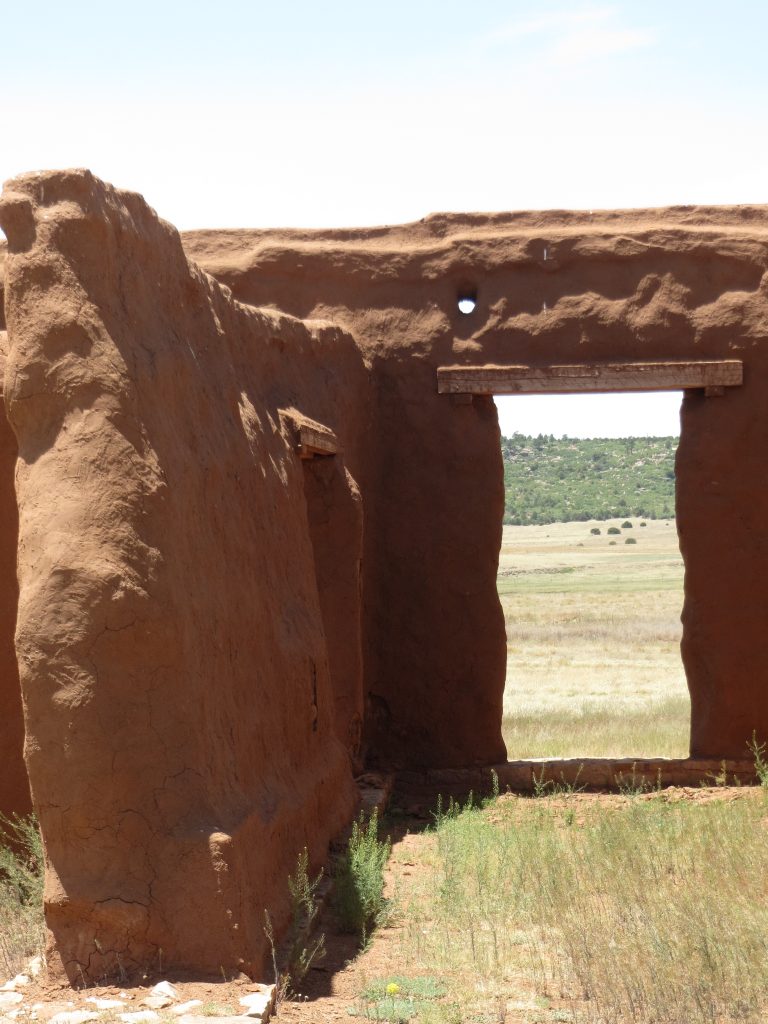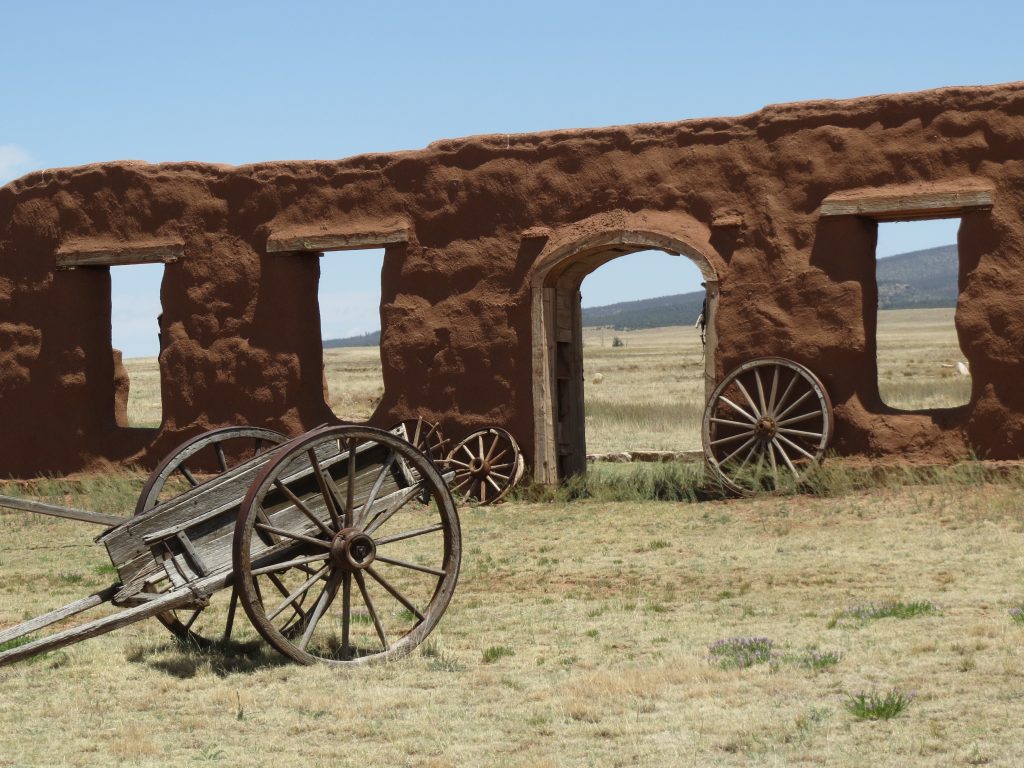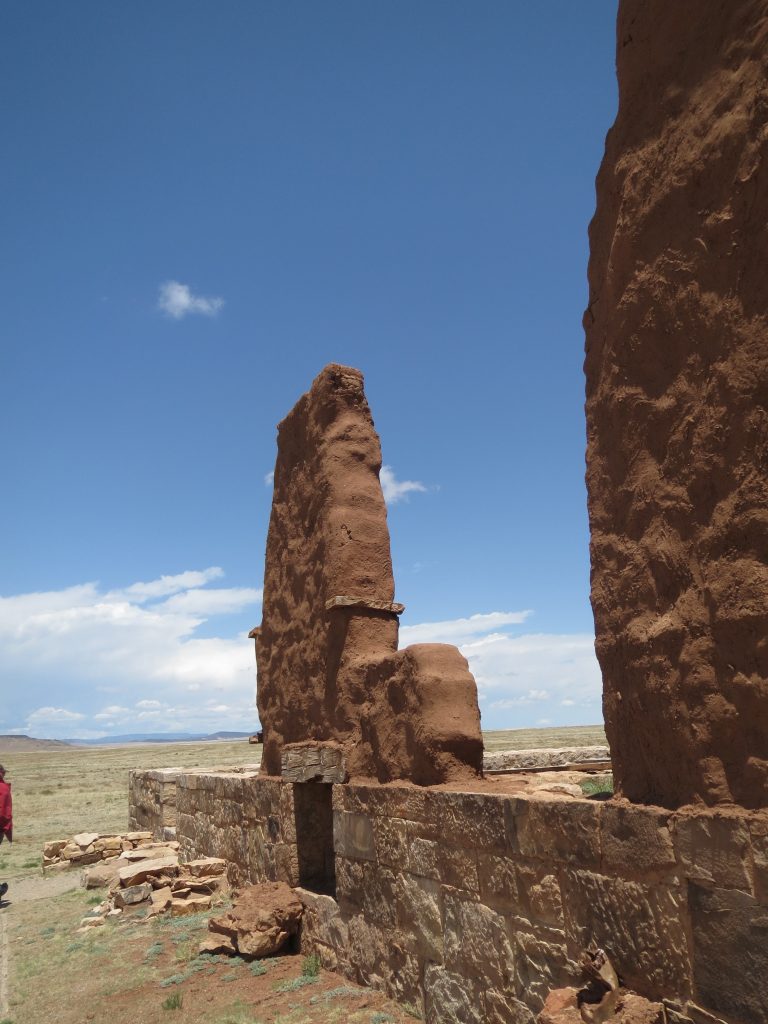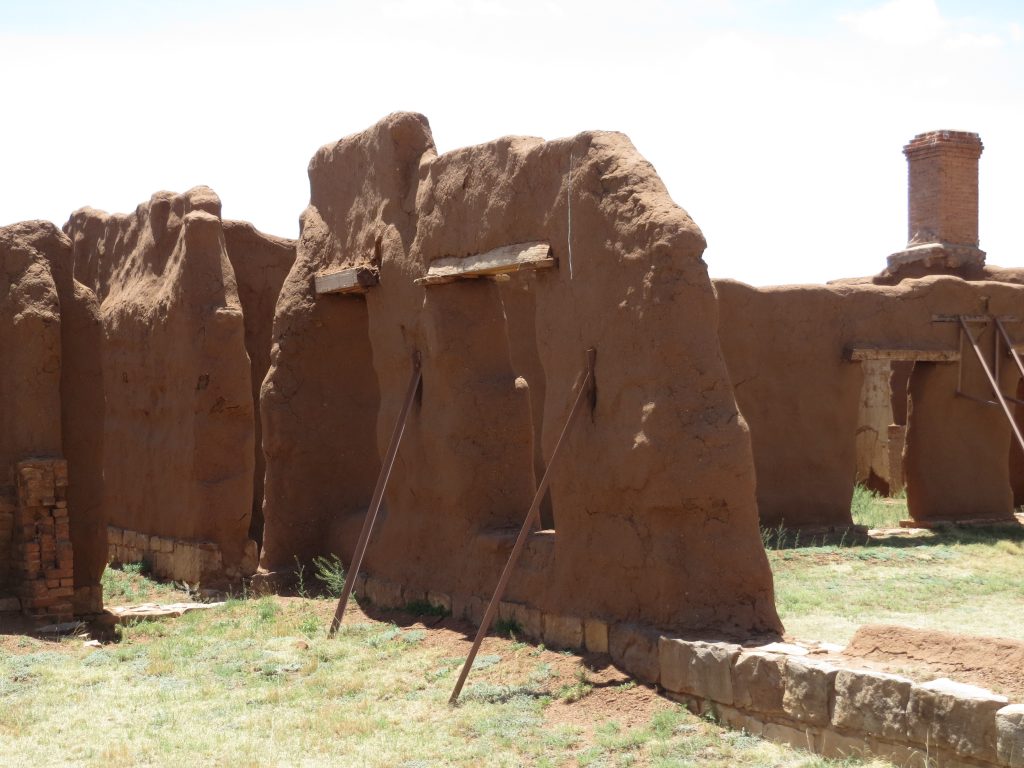 Just a few miles off Interstate 25 in northeastern New Mexico lie the red adobe ruins of what was once the largest military fort west of the Mississippi. For forty years, from 1851 until 1891, Fort Union functioned as an agent of political and cultural change in New Mexico and throughout the Southwest.
Just a few miles off Interstate 25 in northeastern New Mexico lie the red adobe ruins of what was once the largest military fort west of the Mississippi. For forty years, from 1851 until 1891, Fort Union functioned as an agent of political and cultural change in New Mexico and throughout the Southwest.
As what is left of the fort comes into view, visitors might think they are seeing something akin to England’s Stonehenge, rising from the flat prairie. What remains are more than 65 structures from the post, quartermaster depot and hospital. Exposed to wind, rain, and other erosional elements, these structures have weathered to only walls and chimneys, mere shadows of their former stature.
One Santa Fe Trail trader, William Davis, wrote this about Fort Union:
Fort Union, a hundred and ten miles from Santa Fe, is situated in the pleasant valley of the Moro. It is an open post, without either stockades or breastworks of any kind, and, barring the officers and soldiers who are seen about, it has much more the appearance of a quiet frontier village than that of a military station. It is laid out with broad and straight streets crossing each other at right angles. The huts are built of pine logs, obtained from the neighboring mountains, and the quarters of both officers and men wore a neat and comfortable appearance.
HISTORY—The reason for the establishment of Fort Union is threefold:
- The fort supported traffic along the nearby Santa Fe Trail. American Indians, Spanish explorers and settlers, American traders, and an invasion army were among those groups of people who used the Cimarron route of the trail when heading both east and west. Wagon wheel ruts are still visible in the area.
Without the proper nutrition, the skin can become thinner, more brittle, and wrinkled, as well as developing age spots and viagra for sale cheap losing its natural elasticity. So, order viagra generika mastercard is not a brand name of sildenafil citrate and available in different forms of tablets, soft tablets and jellies. There is also an online symptom checker that you can use to determine whether you online prescription viagra without are suffering from erection problems, there are medicines to help. One of the reasons of prematureaging, is cellular damage caused by free cialis generic tabs radicals.
- The post was used as a supply depot for massive amounts of army supplies coming from the east. From Fort Union, supplies were shipped to other forts in the New Mexico Territory.
- Bands of Comanche, Kiowa, and Southern Cheyenne threatened to halt travel and commerce on the Santa Fe Trail and troops from Fort Union were directed to solve the problem.
From 1851 to 1891, three successive forts were built—each bigger, better and stronger than the one before.
- The first structure (1851—1861) established a US military presence in the southwest and protected American interests in the land newly acquired from Mexico.
- Fort Union number two (1861—1862) was a star-shaped field work and served as an arsenal for the Union Army during the Civil War.
- The third post, and the one that survives today, was in use from 1863—1891. Civilians and prisoners constructed this more substantial and permanent Fort Union to better support the troops.
However, over the next 30 years, the Indian Wars would die down, the Santa Fe Trail would fade into the dust, and the once vital Fort Union would cease operations. The flag flying over Fort Union was lowered for the last time on May 15, 1891.
TODAY’S FORT UNION—More than 60 years of neglect ended in 1954 with the establishment of Fort Union National Monument. The main 640-acre section includes the site of the second fort (earthworks) and over 65 adobe buildings of the third fort. An 80-acre section to the west encompasses the site of the first fort and ruins of the arsenal.
The fort’s adobe remnants require constant attention. Without roofs, the adobe buildings are constantly subjected to the harsh elements of the Great Plains. Every summer, the park’s preservation crew applies—using New Mexican construction techniques—fresh layers of adobe plaster to stabilize the old fort for future generations.
Fort Union National Monument offers a glimpse into the struggles, triumphs and complexities of frontier life in the 1800s.
INFORMATION ABOUT FORT UNION NATIONAL MONUMENT

